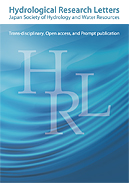Volume 11, Issue 3
Displaying 1-5 of 5 articles from this issue
- |<
- <
- 1
- >
- >|
-
2017 Volume 11 Issue 3 Pages 141-148
Published: 2017
Released on J-STAGE: July 05, 2017
Download PDF (336K) -
2017 Volume 11 Issue 3 Pages 149-154
Published: 2017
Released on J-STAGE: July 11, 2017
Download PDF (899K) -
2017 Volume 11 Issue 3 Pages 155-160
Published: 2017
Released on J-STAGE: August 19, 2017
Download PDF (5005K) -
2017 Volume 11 Issue 3 Pages 161-167
Published: 2017
Released on J-STAGE: September 01, 2017
Download PDF (1066K) -
2017 Volume 11 Issue 3 Pages 168-174
Published: 2017
Released on J-STAGE: September 13, 2017
Download PDF (23750K)
- |<
- <
- 1
- >
- >|
